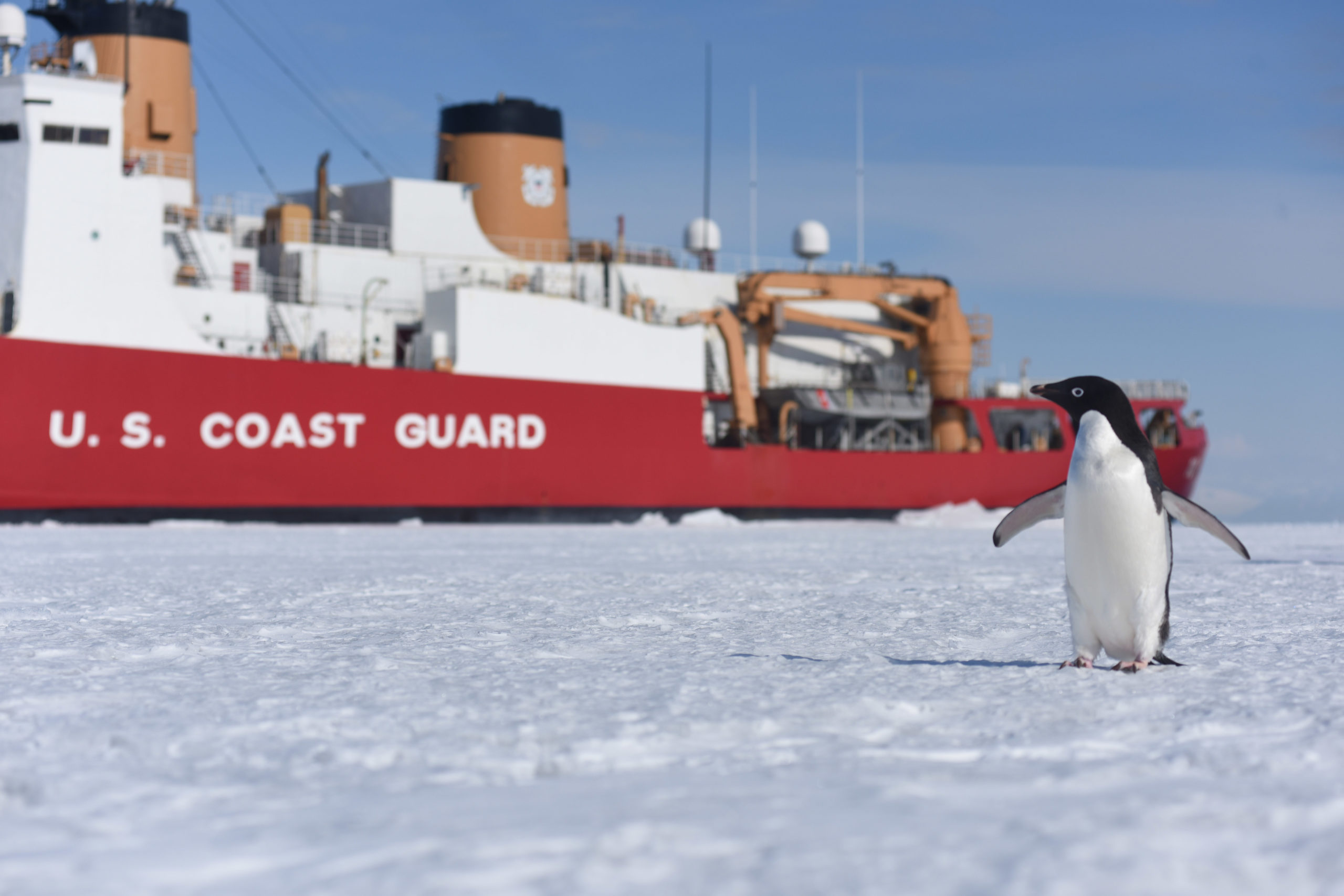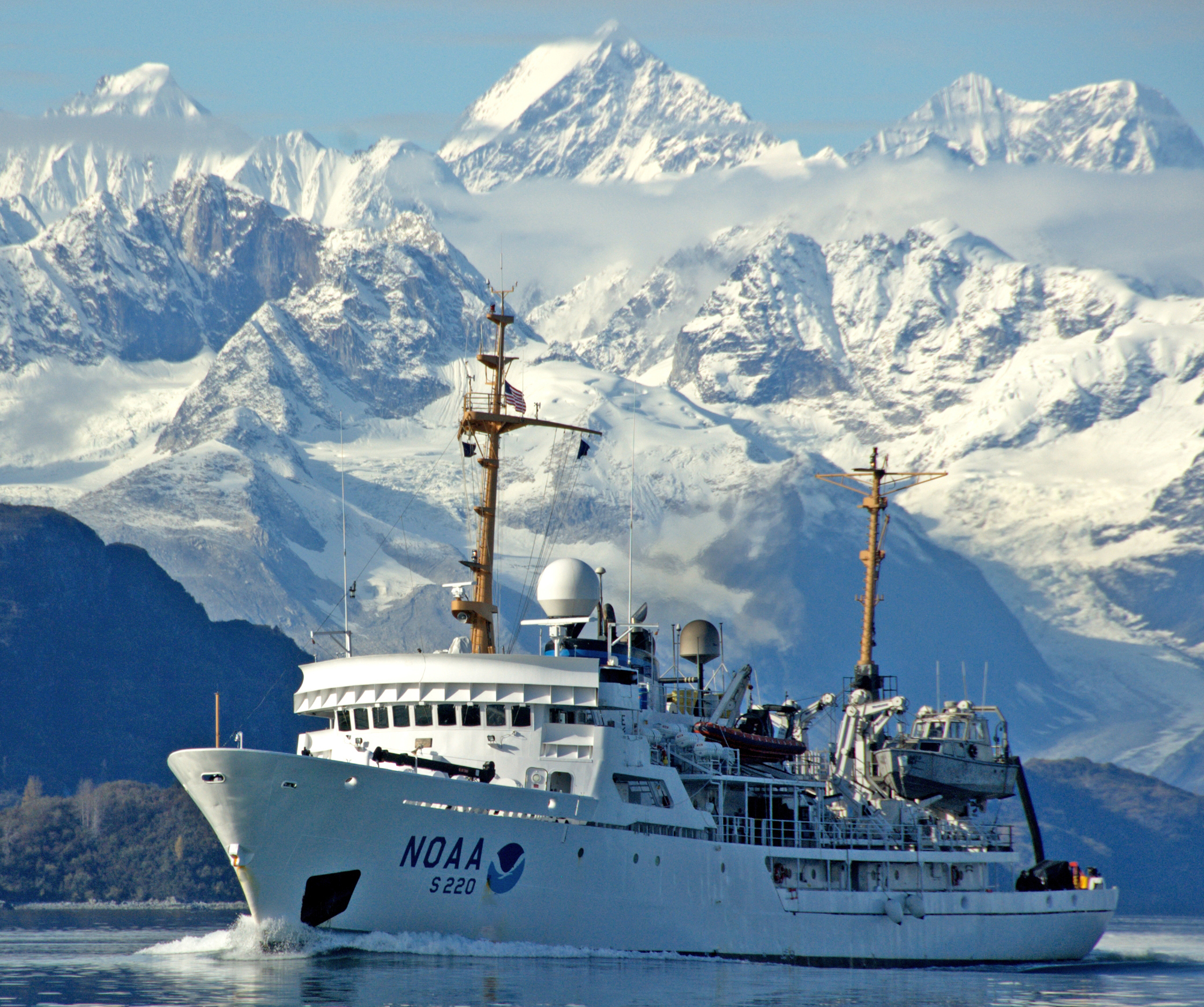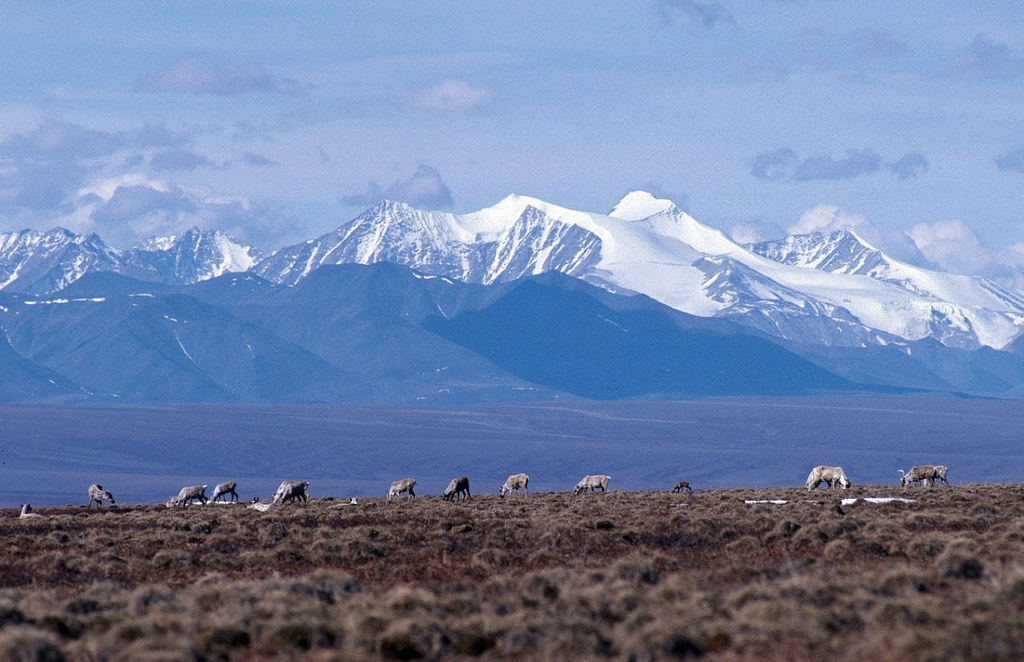Trump’s 2021 budget includes more funding for icebreakers, other Arctic priorities
The proposed budget also anticipates $1 billion in revenue from Arctic drilling.

The Trump administration’s $4.8 trillion proposed 2021 U.S. budget was released Monday, and it includes funding for several Arctic-related initiatives. Key among these are more funds to build a second new polar icebreaker, to better chart Alaska’s coasts and waterways, and to support a new task force to address unsolved cases of missing and murdered Indigenous women and girls.
The budget also anticipates revenue of $1.06 billion this year and another $502 million in 2021 from the sale of oil and gas leases in the Arctic National Wildlife Refuge.
Next, the House of Representatives and the Senate will take up their own funding bills, which often diverge from the president’s budget proposal.
Another new Coast Guard icebreaker
The administration’s budget request includes $555 million in funding for a second new U.S. Coast Guard polar security cutter.
Previously, the Coast Guard received funding in the 2019 and 2020 budgets to construct the first heavy icebreaker in four decades and to secure materials for a second. This new influx of funding would fully fund the second icebreaker.
The contract with VT Halter, the company building the first icebreaker, includes the option of building two more icebreakers.

But as Ryan Uljua points out in High North News, VT Halter may not be able to deliver the first vessel by 2024, as planned. The U.S. Government Accountability Office recently expressed concerns about the company’s aggressive timeline. (And it’s not the first time the GAO has warned about unrealistic timelines in the new icebreaker program.)
One issue for Congress as it considers the 2021 budget request, a Congressional Research Service report says, is whether it makes more financial sense to enter into a “block buy” contract, which could reduce costs by purchasing two or more icebreakers at the same time. The current contract with VT Halter wouldn’t provide the same cost savings, the report says.
Funding for one or more additional icebreakers is particularly relevant for the Arctic.
“The first polar security cutter is going to go down and break up McMurdo Station. It’s the second and third hulls, or subsequent hulls, that give us some increased presence in the high-latitude region,” said Adm. Karl Schultz, commandant of the U.S. Coast Guard, at an event last May.
The administration’s proposed budget also authorized $15 million to continue repairs on the Polar Star, the only operational heavy icebreaker in the U.S. fleet. The aging vessel has broken down several times on recent resupply missions to McMurdo.
This new proposed budget did not, however, include another Arctic provision the Coast Guard has been asking for: improved communications in the Arctic. Currently, the agency use high-frequency radios to communicate in high latitudes.
“When Healy sailed above the Arctic Circle this summer, she was literally off the grid for almost a month,” Vice Adm. Charles Ray said last month. While there’s some funding in this proposal for improving Coast Guard communications in general, it did not address the specific challenges of communicating in the Arctic.
Alaska coastal mapping
Back in November, President Trump signed the Memorandum on Ocean Mapping of the United States Exclusive Economic Zone and the Shoreline and Nearshore of Alaska. The new proposed budget would provide $188 million for NOAA to continue mapping and exploring the U.S. exclusive economic zone and Alaska.

The budget proposal points out that only about 40 percent of the U.S. EEZ has been mapped, and “Alaska and the Alaskan Arctic lack the comprehensive shoreline and nearshore maps available to much of the nation.”
The mapping and ocean research would also help identify potential new sources of minerals, biopharmaceuticals, and energy, as well as areas of significant ecological and conservation value, a NOAA spokesperson told ArcticToday.
Unsolved murder and missing persons cases
The proposed budget for the Department of Interior and Bureau of Indian Affairs includes $3 million for a special law enforcement initiative to support the new task force on missing and murdered Indigenous women, called Operation Lady Justice.
The task force focuses on missing persons, domestic violence and unsolved cases involving Indigenous peoples.
[Why human trafficking is a serious — but mostly invisible — problem in Alaska]
Sen. Lisa Murkowski, a Republican from Alaska, spoke about the epidemic of violence against Indigenous women and girls at a Capitol Hill event on Thursday. Indigenous women are murdered at rates 10 times their non-Native peers in the United States, she said, and 85 percent have experienced physical, sexual, or psychological violence.
“Together, we’re making a difference,” she said. “But we can’t move fast enough.”

Though Murkowski didn’t address the president’s budget request at the event, her spokesperson told ArcticToday that the senator is “encouraged” to see the administration prioritizing the crisis in its request.
However, the proposed budget focuses on cases in “Indian Country within tribal jurisdiction.” Alaska is unusual among U.S. states in that it does not have significant tribal jurisdictions. Observers say the language may change in the Congressional bills to include Alaska communities with majority Indigenous populations.
Arctic drilling revenue
The proposed budget anticipates revenue totaling $1.06 billion from the ANWR lease sale this year, with another $502 million next year. Alaska would receive half of this revenue.
This amount slightly exceeds the anticipated revenue of $1 billion outlined in the 2017 tax bill that authorized drilling in the coastal plain.
However, if the Department of Interior receives bids for 1 million acres in the coastal plain, the average price per acre would need to be $1,000.
“It’s definitely a high bar,” said Mark Myers, an energy and natural resources consultant who was previously a natural resources commissioner in Alaska and the former director of the U.S. Geological Survey, in a conversation with ArcticToday last year.

Higher bids on natural resource leases come when “people have very high confidence in the geology,” he said. “So they’re willing to spend that money… per acre to get that acreage, because it’s extremely valuable to their plan.”
Companies that have conducted seismic testing, for example, may be fairly confident that an area holds significant natural reserves.
But in a frontier area like the coastal plain, however, that’s less likely to happen. An average price of $100 to $200 an acre is usually considered a “good sale,” he said.